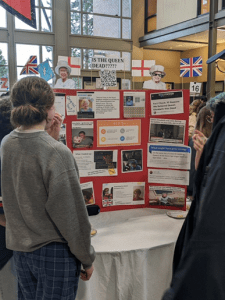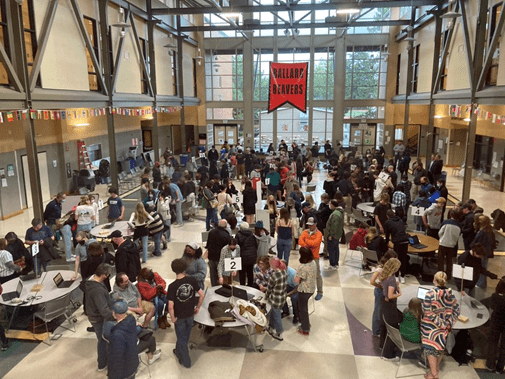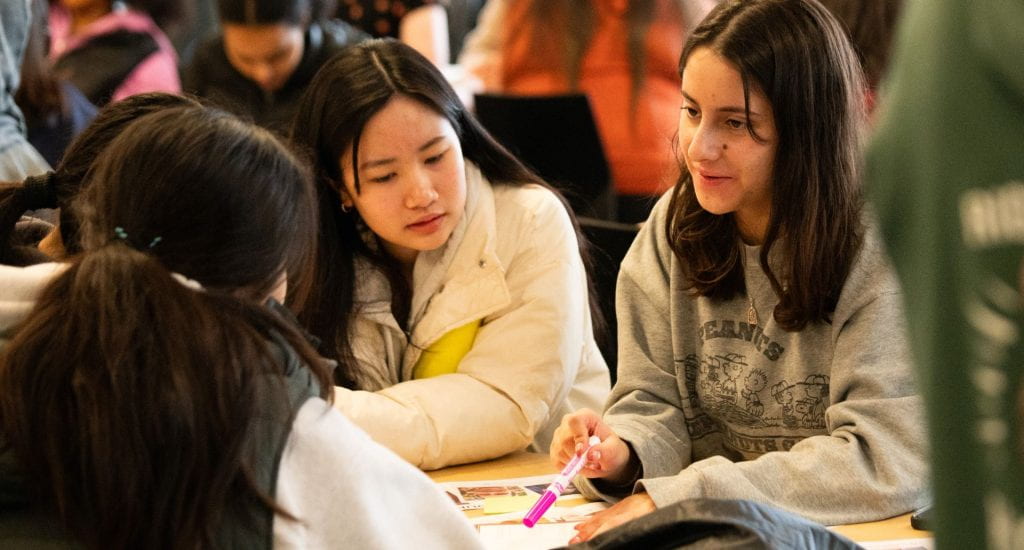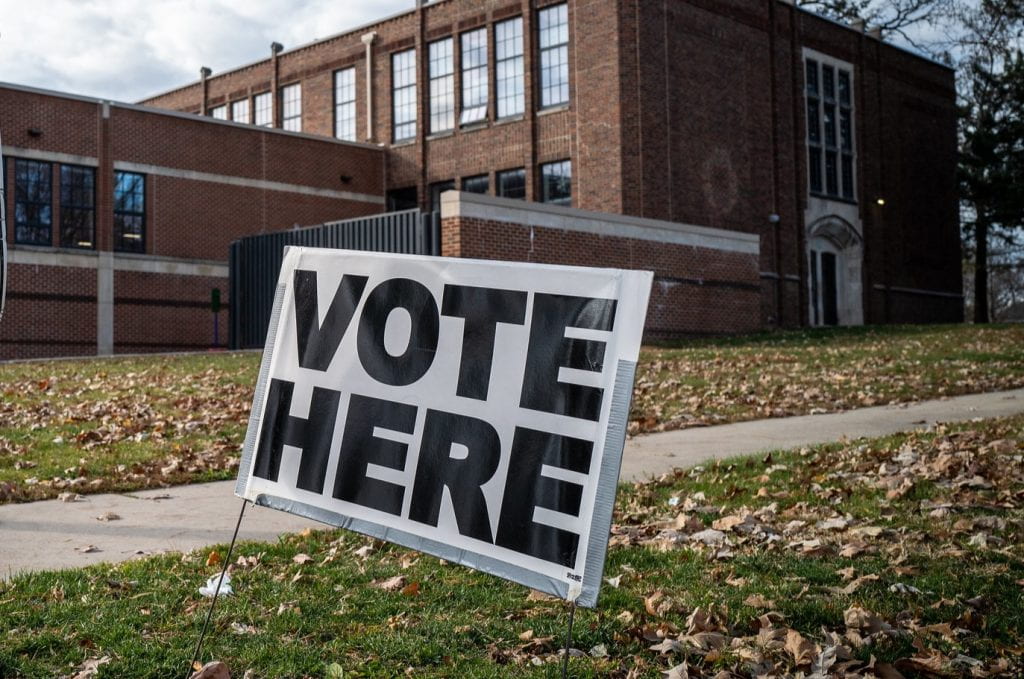Approximately 300 students at Ballard High School in Seattle, joined by their teachers and parents, gathered for MisinfoNight on June 9, the culmination of student project work where they end up teaching adults valuable skills for fact-checking, contextualizing claims and tracing sources of information online.
The event at Ballard High School, inspired by the annual MisinfoDay educational program co-presented by the University of Washington’s Center for an Informed Public and Washington State University’s Edward R. Murrow College of Communication, featured introductory remarks from CIP research scientist and digital literacy expert Mike Caulfield.
In a tweet thread featuring highlights from Ballard High School’s MisinfoNight, Caulfield explored student project presentations, many of which demonstrated the SIFT method for factchecking and contextualizing claims online – Stop, Investigate the source, Find better coverage, Trace claims, quotes and media to their original context – which Caulfield developed. Other presentations looked at concepts like confirmation bias, filter bubbles, and bad statistics, including approaches taught by CIP co-founder Jevin West, a UW Information School associate professor, who helped launch the first MisinfoDay in 2019 at the iSchool.
 Among the student projects was one that examined an online rumor from February that Queen Elizabeth II of the United Kingdom had died. “The students walked through how the February rumor came up about the queen’s death, how they checked the source, checked other sources, and displayed a lot of humor along the way,” Caulfield wrote.
Among the student projects was one that examined an online rumor from February that Queen Elizabeth II of the United Kingdom had died. “The students walked through how the February rumor came up about the queen’s death, how they checked the source, checked other sources, and displayed a lot of humor along the way,” Caulfield wrote.
“I watched the students do [SIFT], and they were **amazing** at teaching the parents. They are showing them how to long press on the phone to copy and paste text into the search bar. They are sending them to Wikipedia pages and showing them the basics of interpreting them,” he continued. “To get to that level of teaching the students had to have learned this at a pretty deep level. And the parents are going from booth to booth over an hour and getting the equivalent of an entire ONE HOUR personalized interactive workshop.”
Caulfield observed that an event like MisinfoNight, where students are teaching their parents, effectively “converts a school’s information literacy curriculum into true community capacity.”
“There’s a lot of distrust of schools and institutions and government agencies … They don’t want to hear from experts. But they will hear what their grandchild or what their son or daughter has to say,” teacher Shawn Lee, who helped organize MisinfoNight with other educators at Ballard High School, told KNKX Public Radio in an interview ahead of the social science fair.
It’s an approach that many teachers and librarians engaged in this work, including those in Washington state, like Lee, who are involved in a group of educators inspired by the CIP’s mission called Teachers for an Informed Public, think can be successfully replicated and adapted in other schools and communities.
“I’ve often replied when people ask ‘You’re teaching students, but what about the adults?’ that you teach the students and the students bring those skills into the community,” Caulfield wrote in his tweet thread. “But this took that to the nth level, systematized it, and turned it into something beautiful. I know the organizers are excited to help extend the model to other schools. I hope if folks who are reading this have a way to help make that happen that they will.”
ADDITIONAL RESOURCES
- CIP | Lessons and key highlights from MisinfoDay 2022
- CIP | Mike Caulfield’s MisinfoDay 2022 workshop: Sourcing quotes
- CIP | MisinfoDay 2022 workshop: Why we fall for misinformation
- CIP | Toolkit: How to host MisinfoNight at your school
- The Seattle Times | “Professors host day to teach WA how to combat misinformation”
PHOTOS
- Top photo: MisinfoNight at Ballard High School on June 9 (Photo by Shawn Lee)
- Second photo: A student project at MisinfoNight (Photo by Mike Caulfield)




